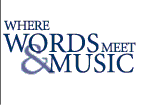


Programme Notes
Chantes des voyageurs
February 10, 2003
Programme notes by Andrea Budgey
Ludwig von Beethoven: Scottish Folk Songs, op. 108
Mieczyslaw Kolinski:Six French Folk Songs & Five
Canadian Folk Songs
Rebecca Clarke: Three Old English Folk Songs
Gilbert Patenaude: Six Chansons du Detroit & L'Hirondelle
Diane Chouinard: Chansons folkloriques Québécoises
Ralph Vaughan Williams: Two English Folk Songs
Ernest MacMillan: Three French Canadian Sea Songs
The voyageurs of this evening's title are not only the French explorers and fur-traders of early European-Canadian history, but "travellers" of every period. The writers from whose work the readings are taken represent both France and England, and the 17th and 19th centuries, while the composers include representatives of the Old and New Worlds, as well as immigrants of diverse backgrounds: the English-German-American Rebecca Clarke, for example, and the Polish-German-American-Canadian Mieczyslaw Kolinski.
Folk-song settings are examples of travel across cultures, usually imagined as the immigration of pristine, simple, and relatively unsophisticated material into a more cultivated sphere: from the rural Highlands of Scotland to the drawing-rooms of Edinburgh and Berlin, for example, or from the farming villages of Quebec to the urban concert-hall.
The writers represented, on the other hand, saw themselves making the reverse journey, from the "civilisation" of Europe to the "wilderness" of North America. Their reactions were, of course, quite varied: Catherine Parr Traill embraced most of the adventures of homesteading life in Upper Canada enthusiastically, while her sister Susannah Moodie generally compared her new home to her old one, to the detriment of the former. The power of nostalgia, and the desire to preserve elements of ancestral culture, have of course meant that Canadians of both French and English origin (like immigrants of other backgrounds) have been for many generations more interested in the "folk" traditions of their homelands than they might have been if their families had remained in the Old World.
The range of attitudes among immigrants, from cheerful acceptance of new surroundings and customs to insistence on shaping life along known lines, can perhaps be seen in reverse in the folk-song settings: some composers, like Vaughan Williams, prized the strength and simplicity of oral tradition almost at the expense of their own opportunities for creative mastery and display; others, like Diane Chouinard - or Beethoven, for that matter - have drawn the traditional material into a far more personal idiom. In all the works on this evening's programme, however, the results are ultimately satisfying.
Ludwig van Beethoven: Scottish Folk Songs, op. 108
for voice, violin, cello, and piano
Beethoven composed numerous folk-song settings, almost all of them for the Edinburgh publisher George Thomson, between 1809 and 1820. Thomson's policy was to send the composers the tunes of the original songs, with an indication of mood and tempo, and then to match new versions of the text to the completed arrangements. Most of the resulting settings are, therefore, politely romantic19th-century recastings of the ancient and varied scenarios of folk-song (the text of The maid of Isla, for example, is as far from the original folk-style as might be imagined). While Beethoven may initially have undertaken the project as a strictly commercial venture, he invested great energy and originality in it, eventually producing 176 settings for Thomson (outnumbering his works in any other form). The accompaniments are unusually sophisticated, and the preludes and postludes provide a structural coherence unusual in this genre; The lovely lass of Inverness is a particularly fine example. The songs on this evening's programme are all from the Twenty-five Scottish Songs, opus 108, published in London and Edinburgh in 1818 and "palmed off", as Beethoven put it, on the Berlin publisher Schlesinger in 1822.
Mieczyslaw Kolinski (1901-1981):
Six French Folk Songs for voice, flute, and piano (1969),
Three Canadian Folk Songs for voice, flute, and piano
Mieczyslaw Kolinski was born in Poland, and educated in Berlin; he taught there and in Prague before going into hiding in Belgium during World War II. He subsequently emigrated to North America, first to the United States and then, in 1966, to Canada. He was active as a composer, theorist, and ethnomusicologist, with interests in the music of many cultures, but a particular focus on those of his adoptive country - French, English, and First Nations. In 1972, he was recognised by the Society for Ethnomusicology for his contributions to the discipline, and in 1979 he was named scholar emeritus by the Faculty of Music at the University of Toronto. His folk-song settings reflect his intensive study of the folk repertoire and his conviction of its essential integrity: the accompaniments draw on the modal and rhythmic structures of the original tunes, extending them into an additional instrumental dimension, but presenting them as gems worthy of setting rather than as raw material for the production of contemporary art-music.
Rebecca Clarke (1886-1979) : Three Old English Songs
for voice and violin (1924)
Rebecca Clarke was born in England to an American father and a German mother. She studied at the Royal College of Music with Stanford, where she was a friend of Holst, Vaughan Williams, and Eugene Goossens. During her lifetime, Clarke was perhaps best known as a professional violist, and some of her early compositions were published under the pseudonym "Anthony Trent". She toured extensively as a performer, not only in Britain but in the United States, where she settled during World War II, and where she spent the rest of her life. Her early works were characterised by a highly individual combination of impressionism and romanticism, with a striking use of modal structures and dissonance; the Viola Sonata of 1918 met with particular success. By the 1920s, however, she had begun to compose in a more economically neo-classical style, and the Three Old English Songs (two 17th-century songs and one folk-song) come from this period. The extraordinary richness of the solo violin part - more a partner of the voice, or commentator on the song, than an accompaniment - is evidence of her powers of melodic invention. The work was premiered in 1924, with the composer on the violin.
Gilbert Patenaude:
Six chansons du Detroit and L'Hirondelle
for mezzo-soprano, baritone, flute, and string quartet
Montreal native Gilbert Patenaude studied piano, organ, conducting, and theory in his home city and in Nice, France, and Hilversum in the Netherlands. He has been the musical director of numerous groups, including the Thé‰tre lyrique de Laval, the Orchestre symphonique de Laval (of which he was the founding director), the Petits Chanteurs du Mont-Royal, and the Choeur Enharmonique. He has produced many choral and orchestral arrangements, as well as large-scale original compositions such as the operas Pour quelques arpents de neige (1989) and Chevalier de Lorimier (1992), and the "musical tales" Wananish (1993) and Le bal des douze princesses (1995). The Six chansons du Detroit, a commission from the Talisker players, are settings of songs from the francophone tradition of the Detroit/Windsor area - a centre of voyageur activity during the most active period of the North American fur trade. In these pieces, as in the separate French-Canadian folk-song L'Hirondelle, which begins the second half of the programme, the two voices appear both in dialogue and in duet. The string quartet functions very much as a unit, supporting and surrounding the voices, while the flute provides both subtle hints of colour, and soloistic obligato interludes.
Diane Chouinard: Chansons folkloriques Quebecoises
for voice, viola, and piano (1990)
Diane Chouinard is another Montreal composer, one whose studies also took her to Boston, Geneva, and Toronto; she now lives in Vancouver. Much of her work is for voices, especially for dramatic use. Current events are a frequent source of inspiration: for example, one year after the massacre of 14 women in the School of Engineering at the University of Montreal, she composed In Memoriam in their memory. She is also deeply concerned about the environment, and has written a trilogy of tone poems based on First Nations' legends about endangered species of Canada. A third significant influence, that of her French-Canadian heritage, is exemplified in the songs performed this evening. The first, Ah! toi, belle hirondelle, provides a second look at the tune also set by Gilbert Patenaude; its texture, and that of Faut aller cherchez le loup, are reminiscent in some ways of 19th-century settings, but the tonal language is wholly 20th-century, setting off the relatively simple melody of the folk-song. The musical style and structure of the final song, Je le mene bien mon devidoir, bring out the fragmentary, enigmatic, and inconclusive quality of the dialogue in the text, with running figures and glissandi in the viola part, and a final cadence which sounds anything but final!
Ralph Vaughan Williams (1872-1958):
Two English Folksongs
for voice and violin (1913)
Like Mieczyslaw Kolinski, Vaughan Williams was a devoted collector of folk music as well as a highly original composer, and his settings of folk-songs reflect a similar attitude to the dignity of the original material. These two pieces, for example, adhere much more closely to the modal structure of the melodies than do Rebecca Clarke's neo-classical re-workings for the same forces, with far more self-effacing (but sensitive and highly effective) accompaniments. Searching for Lambs is an unusual example of an English folk-song in an irregular metre, almost entirely in 5/4, while The Lawyer is a charming statement of bucolic true love.
Ernest MacMillan (1893-1973): Three French Canadian Sea Songs
for voice and string quartet (1930)
Toronto's most prominent organist, conductor, teacher, and composer of the first half of the 20th century needs little introduction, but while most musical Torontonians recognise his name, fewer are aware that he was also a collector of folk songs, who collaborated with Marius Barbeau during the mid- and late 1920s in the gathering and transcribing of First Nations' and French-Canadian material. These three settings grew out of that experience. The string quartet accompaniment provides a smooth, almost orchestral support for the voice - MacMillan specified performance by string orchestra as a alternative - without ever overwhelming the melody or the text. The flowing wave-figures of Sept ans sur mer are particularly effective in expressing the inexorable length of a sailor's stint at sea, while the rhythmic sparkle and polish of A Saint-Malo have made it a concert favourite.